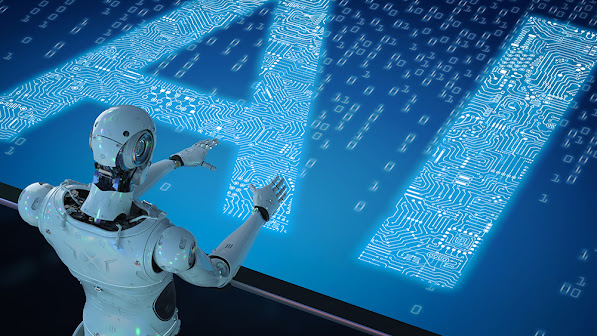Artificial intelligence and machine learning
Artificial intelligence and machine learning are distinct from one another.
 |
| Source |
The area of computer science that is related to one another is artificial intelligence and machine learning. These two technologies are the most popular ones utilized to build intelligent systems today. Even though these two technologies are connected and occasionally used interchangeably, they are nonetheless two distinct concepts in a variety of contexts.
Intelligent Machines
A computer system that can simulate human intellect is created via the science of artificial intelligence. It is made from of the words "Artificial" and "intelligence," which signify "a thinking ability produced by humans." We can therefore define it as,
The artificial intelligence system uses such algorithms that can function with their own intelligence rather than needing to be pre-programmed. It uses machine learning techniques like deep learning neural networks and the reinforcement learning algorithm. Siri, Google's AlphaGo, chess-playing AI, and other applications of AI are widely used.
What distinguishes artificial intelligence from machine learning so significantly?
 |
| Source |
The majority of regular people frequently confuse the terms artificial intelligence and machine learning and use them interchangeably. Even while machine learning is a component of artificial intelligence, these two phrases essentially refer to two separate concepts. Machine learning is only a small subset of the many topics that make up artificial intelligence. The main distinctions between them are shown below.
A computer system that can simulate human intellect is created via the science of artificial intelligence. It is made from of the words "Artificial" and "intelligence," which signify "a thinking ability produced by humans." The artificial intelligence system uses such algorithms that can function with their own intelligence rather than needing to be pre-programmed. It uses machine learning methods including deep learning neural networks and reinforcement learning algorithms. However, machine learning allows a computer system to anticipate the future or make some judgments based on past data without having to be explicitly programmed. In order for a machine learning model to produce reliable findings or make predictions based on that data, a vast amount of structured and semi-structured data is used in machine learning. An algorithm used in machine learning uses past data to self-learn. It only works for specific domains; for example, if we build a machine learning model to find dog pictures, it will only find dog pictures; if we add new data, such as a cat picture, the model will stop working. Online recommender systems, Google search algorithms, email spam filters, Facebook auto friend tagging suggestions, and other applications use machine learning.
The term "artificial intelligence" is ill-defined, which adds to the conflation of the two concepts. A machine that appears intelligent is essentially what artificial intelligence is. Though it's similar to saying something is "healthy," such a definition isn't really helpful. In order to duplicate these behaviors, such as problem-solving, learning, and planning, data analysis and pattern recognition are used to find patterns in the data. Contrarily, machine learning is a form of artificial intelligence in which machines gather data and learn things about the outside world that would be challenging for people to perform. Artificial intelligence is the appearance of being generally intelligent. Beyond human intelligence, ML is capable. The main purpose of ML is to process massive amounts of data quickly using algorithms that improve with use and change over time. A manufacturing facility may gather data from devices and sensors on its network in volumes that are significantly greater than what a human being is able to process. The next step is to use ML to find patterns and anomalies that can point to a problem that people might subsequently solve. Through the use of machine learning, computers can access information that people cannot. It's challenging to explain in simple terms how our visual or linguistic systems function. Because of this, we rely on data and feed it to computers so they can mimic what we're doing. Machine learning accomplishes this.

Comments
Post a Comment